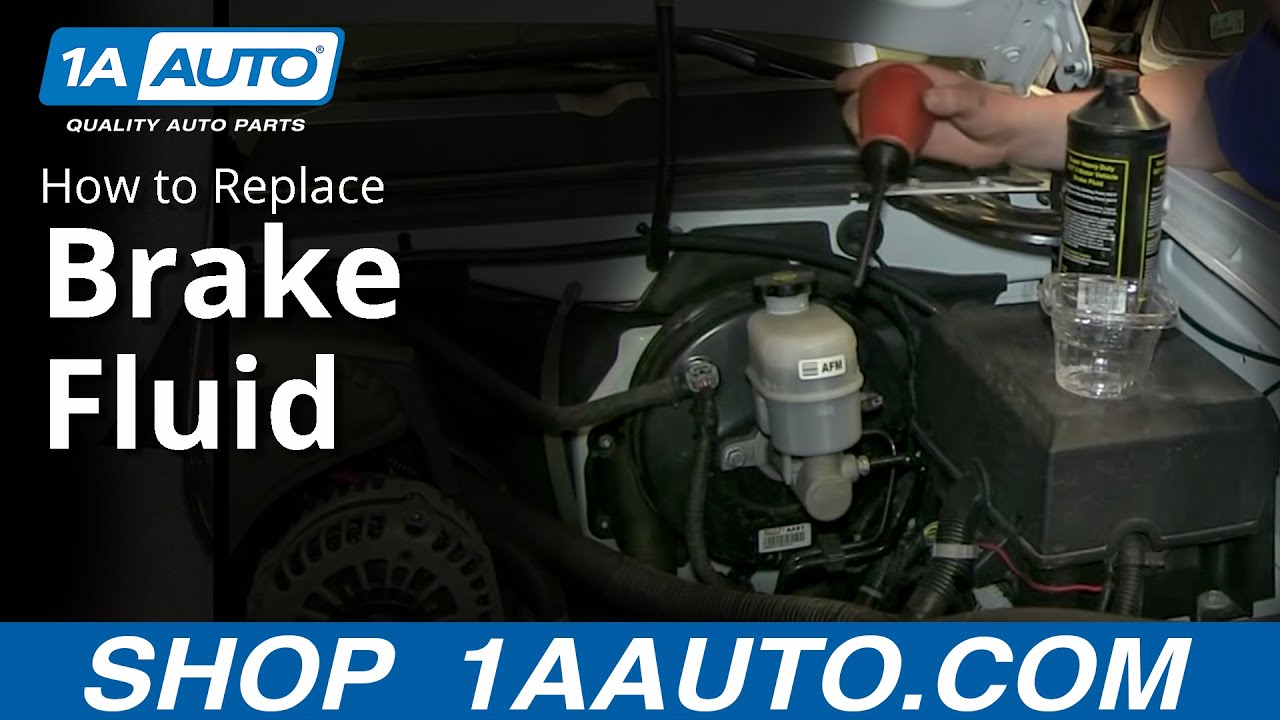
Brake Fluid Types Simple Way To Change The Fluid In The Brake Master Cylinder
Created on: 2014-03-03
How to replace or refill old or dirty brake fluid. We also explain the differences between pre-DOT and DOT fluid, and between alcohol, castor, glycol, and silicone fluid.
-
step 1 :Removing the Brake Fluid
- Clean the master cylinder cap area
- Twist off the cap
- Remove the fluid with a battery acid filler
- Deposit the fluid into a drain pan or other container
-
step 2 :Filling the Brake Fluid
- Fill the master cylinder with fluid to the same level as before
- Twist on the cap
Tools needed
-
Battery Acid Filler
Drain Pan
Cloth Rags
Brought to you by 1AAuto.com, your source for quality replacement parts and the best service on the Internet.
Hi, everyone. I'm Don from 1AAuto.com. In this series of videos we're going to be focusing on vehicle diagnostics and maintenance tips. We hope that you find it helpful and when you need parts for your car or truck, think of 1AAuto.com. Thanks.
In this video, we're going to talk to you about brake fluid, the history of it, and maintaining the brake system in your car or truck. Why is it important to do this? Well of course, you need your brakes to stop, but more importantly, the brake fluid needs to be clean and moisture free. Over the time, it breaks down and moisture gets trapped inside. It doesn't allow the brake system to fully function the way it's supposed to.
Now when it comes from the factory, there's a max line and a minimum line, as a brand new car or truck, with markings for the brake level, fluid level. When it starts out, it's good to see it right there at the top. As you wear those brakes out, the fluid expands more into the calipers, thus going down on the line. It's a good indicator for when you need brakes serviced. Now if you've got the used car, or don't have all the history of it, it's not a big deal. You just want to maintain it on the top level. Always have your brakes checked and make sure it isn't dirty. You can see from behind us, this truck has pretty dirty fluid. It might indicate that there's some moisture in it.
What kind of brake fluid do I use? Well there are a bunch of different types. There is pre-DOT, or Department of Transportation's specification for brake fluid. There is pre-DOT and DOT 2, number 2. Those were alcohol or castor oil-based brake fluids. Those aren't really used anymore. Then you've got the brake fluid DOT 3, DOT 4, and DOT 5.1. Those are all glycol-based. Then you've got DOT 5, and that is a silicone-based. The beauty of the silicone-based, is that it won't harm the paint if you spill some of it.
Now you never want to top one off with another, particularly pre-DOT and DOT 2, if you can get your hands on that. That's not used these days, but you can only replace 4 with 5.1, and 3 with 4. You never mix the silicone with the glycol-based, which is 5 to 3, 4 or 5.1.
Let's go ahead and show you a little bit about this brake master cylinder, and how we can kind of just maintain that brake fluid. All right, so I'm going to flush out very basically the master cylinder. I bought a battery acid filler, which also works for brake fluid. At an auto parts store, it was about $4.50. It's not all that expensive, and this holds up to brake fluid, battery acid, so it won't just kind of melt on you. What I'm going to do is clean off the cap, make sure that the area around the master cylinder is clean. Put that aside. Go ahead in, and just start pulling out the brake fluid. Be careful not to spill it, because you don't want it to get on the paint.
I'm not going to take all of it out, because I don't want any air to get into the lines. I'm going to go ahead with my DOT 3 brake fluid, and fill it back up. We put it back to where the line was before, so I'd still have some indication of how my brakes are, and reseal it.
We hope this video helps you out. Brought to you by www.1AAuto.com, your source for quality replacement parts and the best service on the Internet. Please feel free to call us toll-free, 888-844-3393. We're the company that's here for you on the Internet and in person.

How to Remove Front Bumper 2012-19 Nissan Versa
How to remove or replace a damaged, scratched, or broken front bumper cover on 12, 13, 14, 15, 16, 17, 18, 19 Nissan Versa
